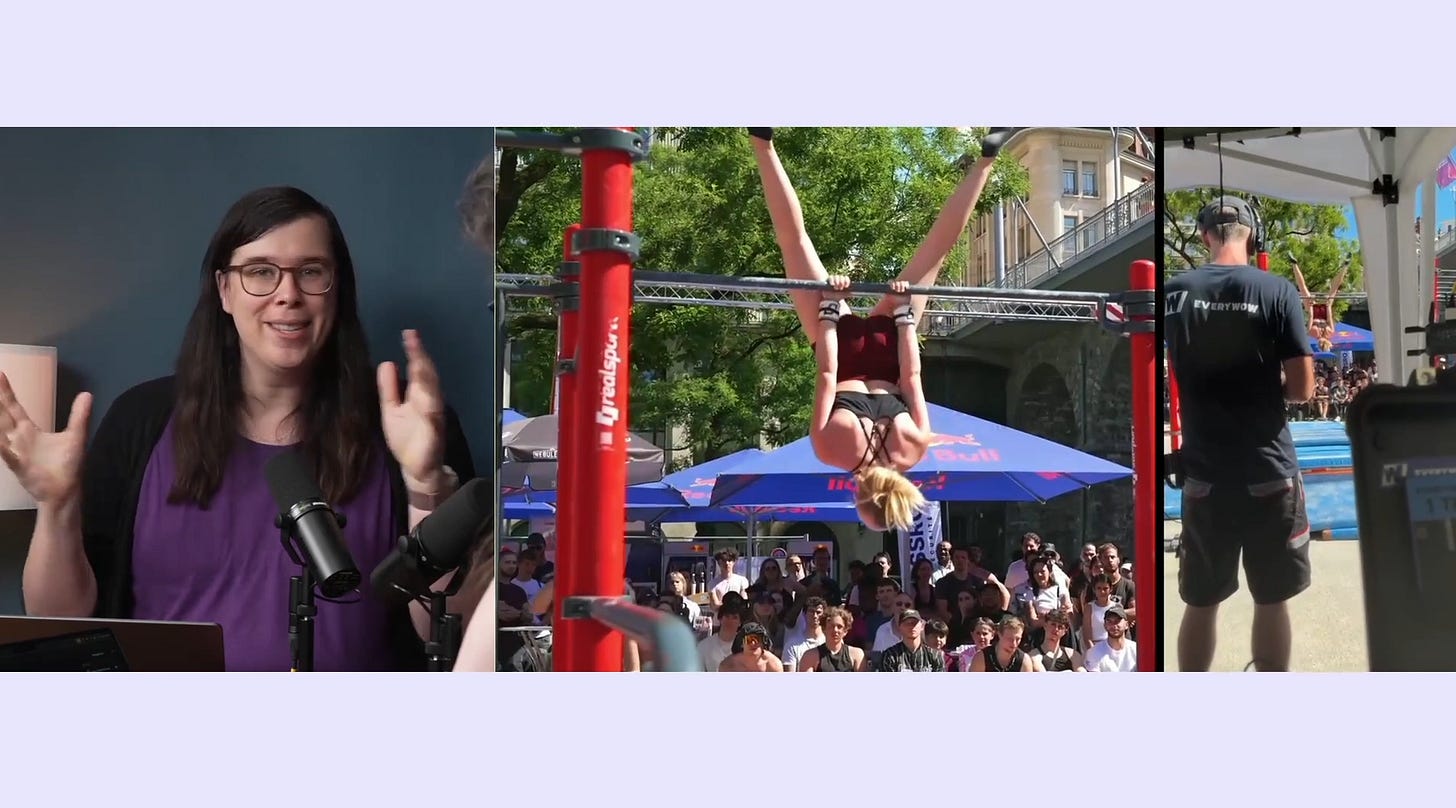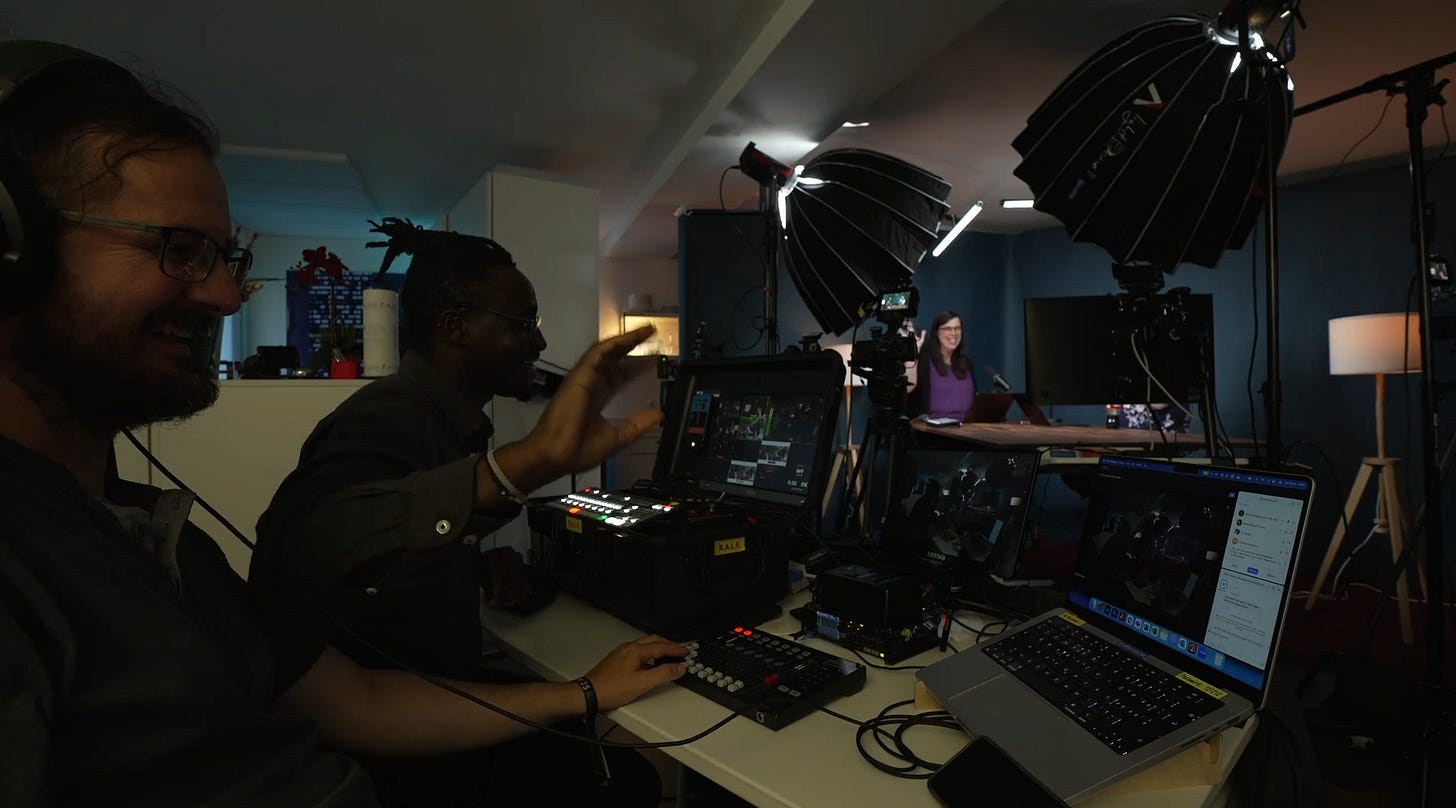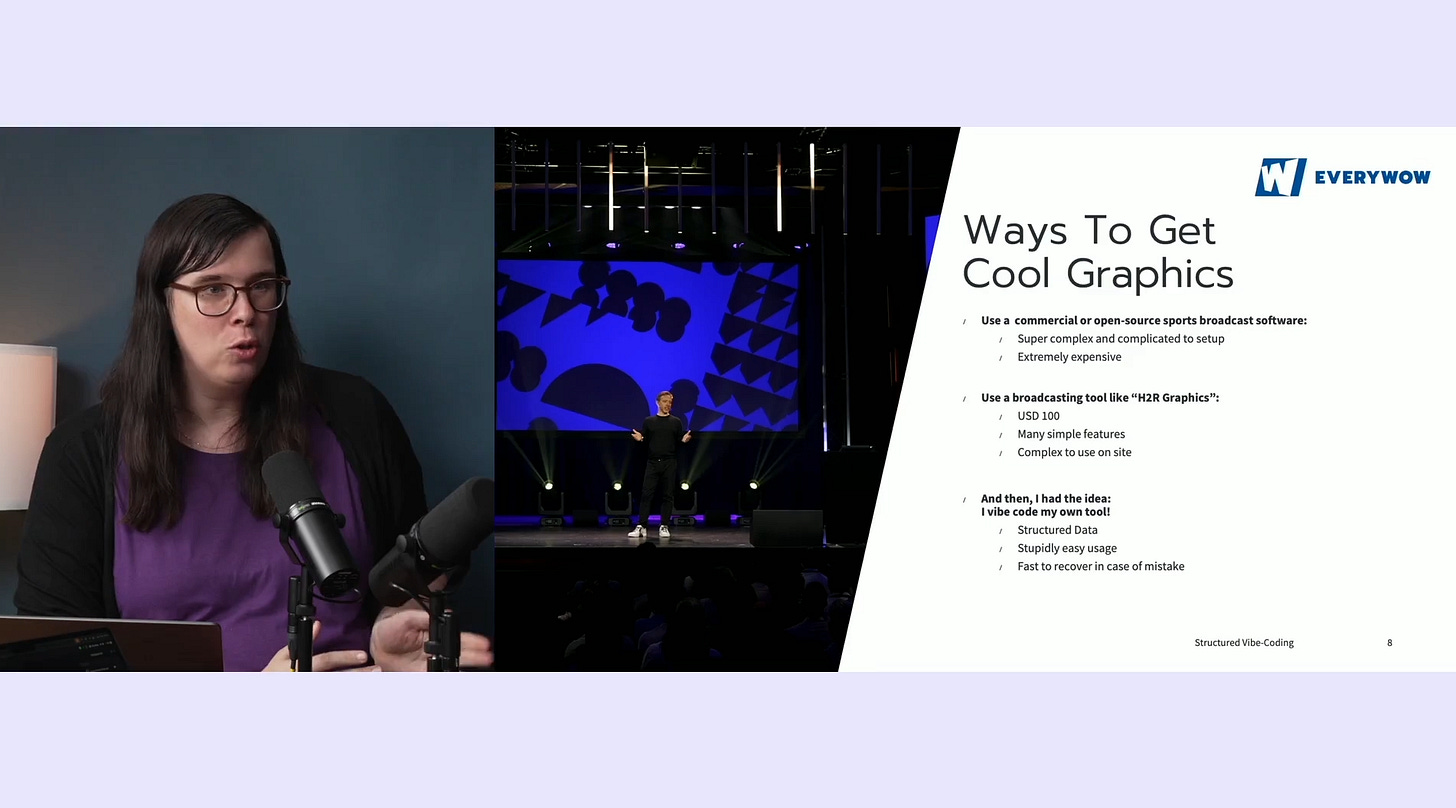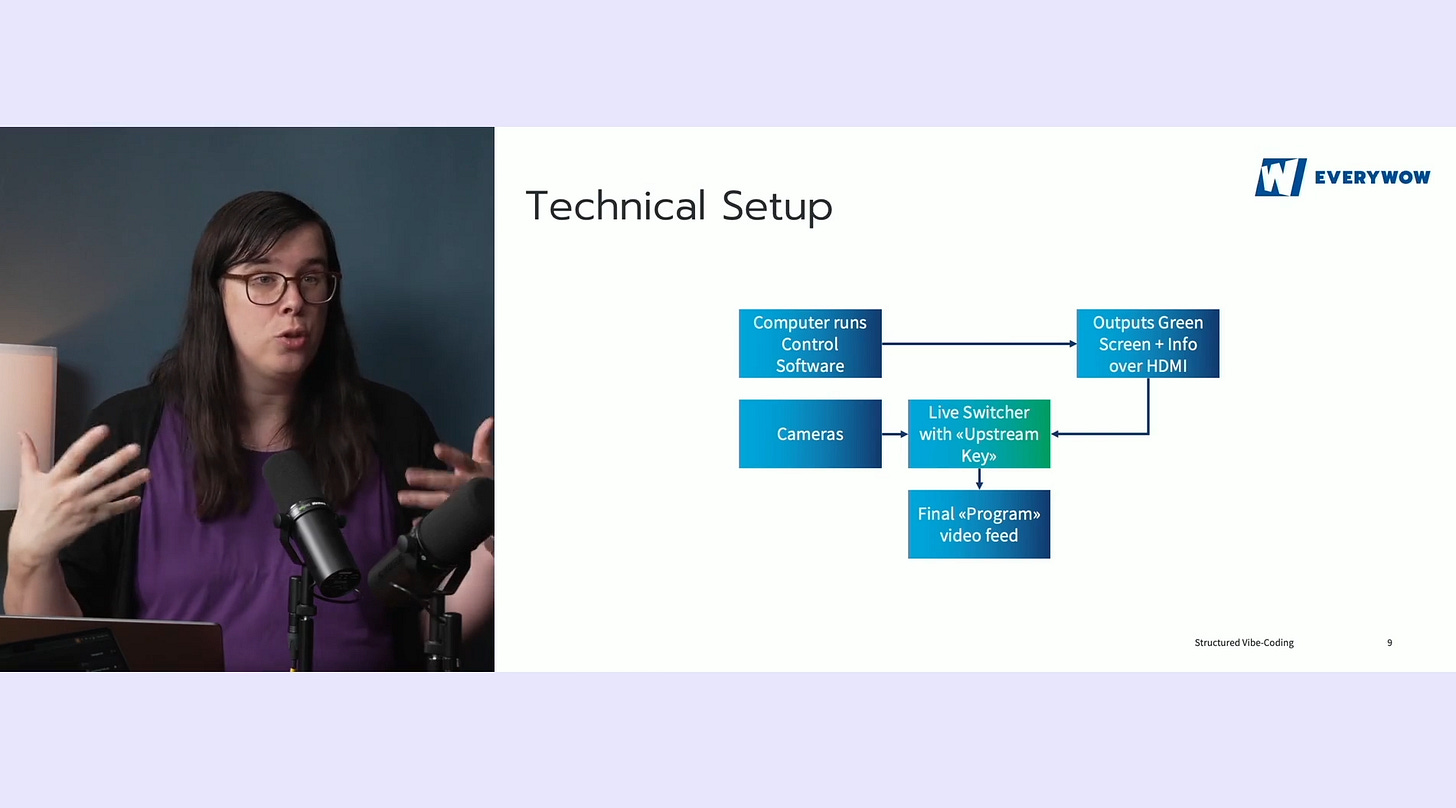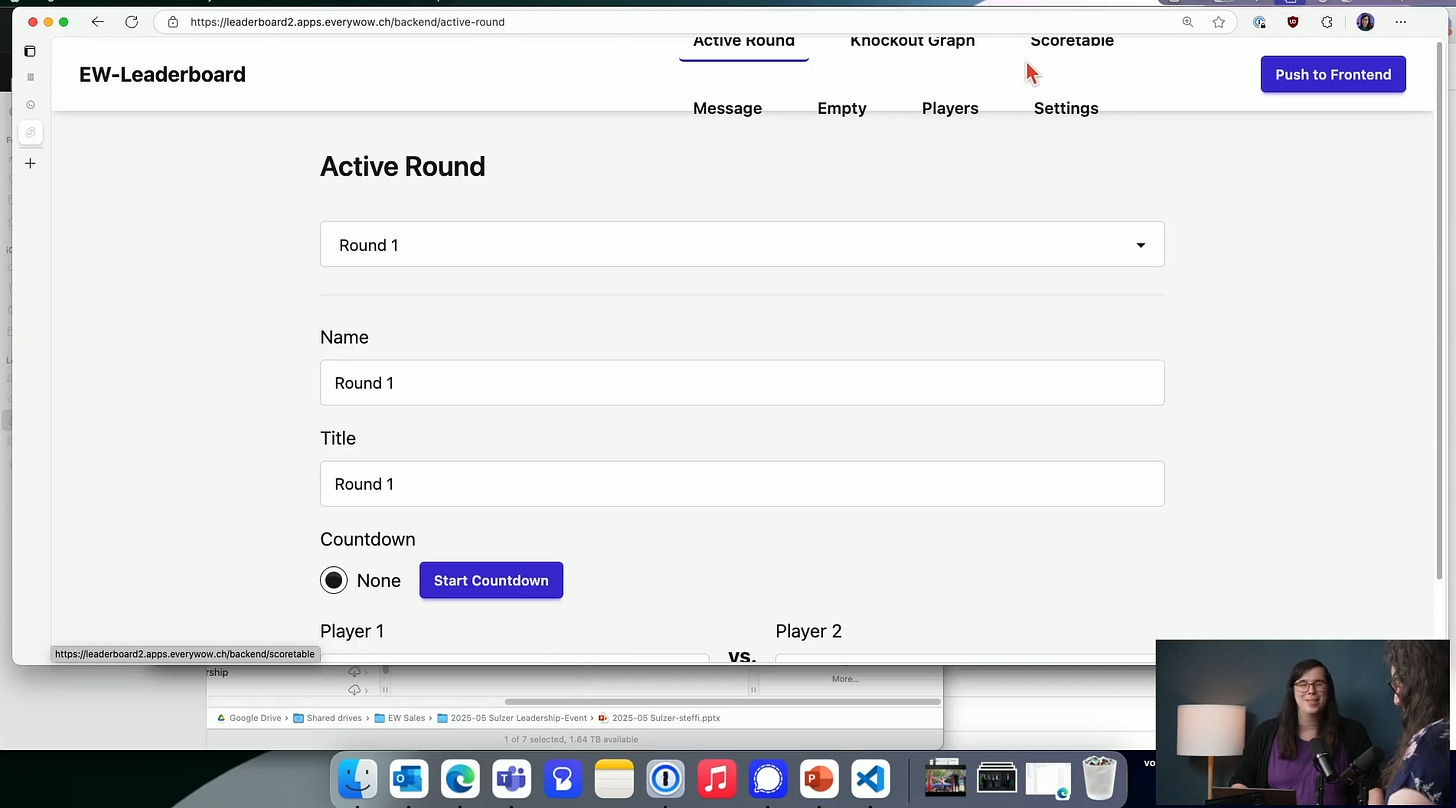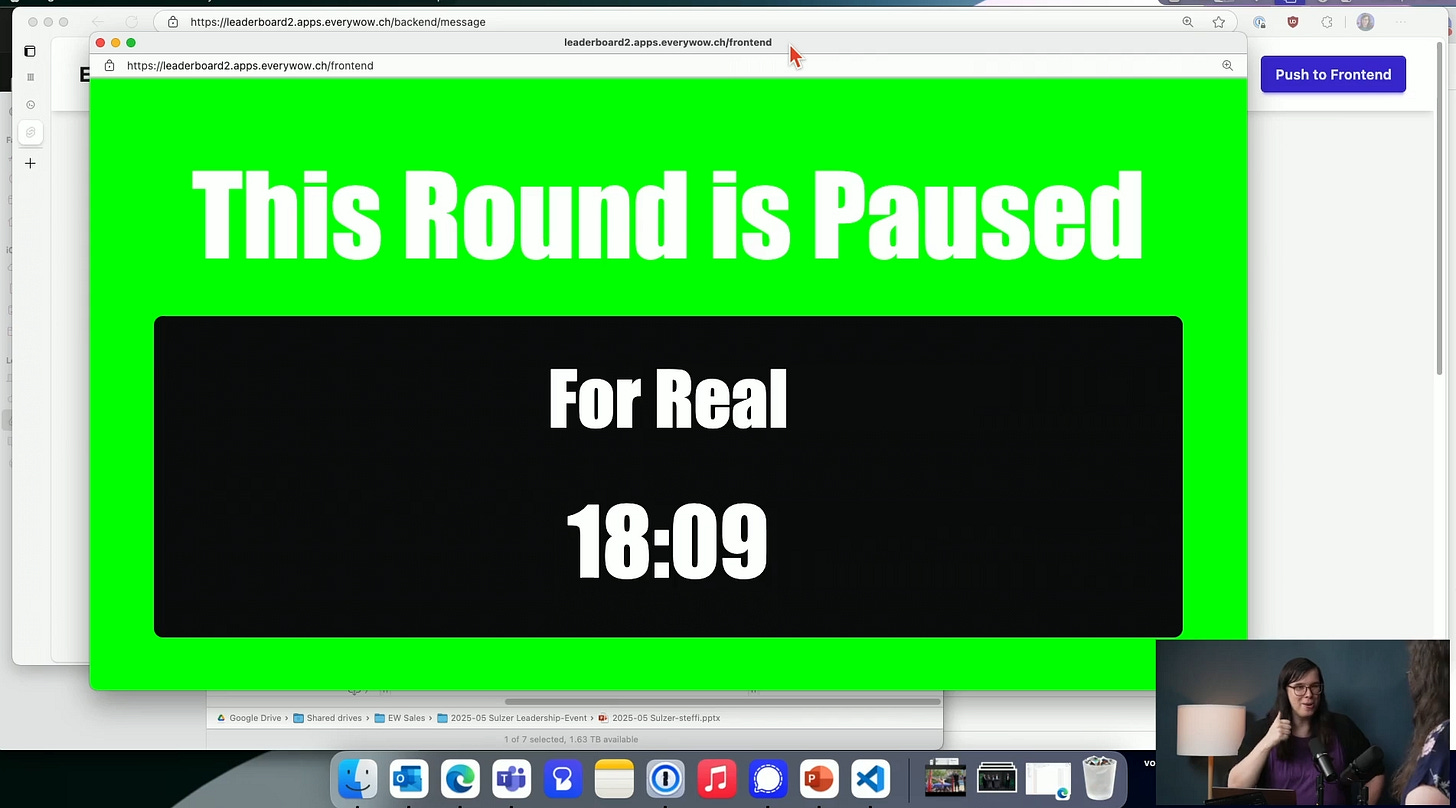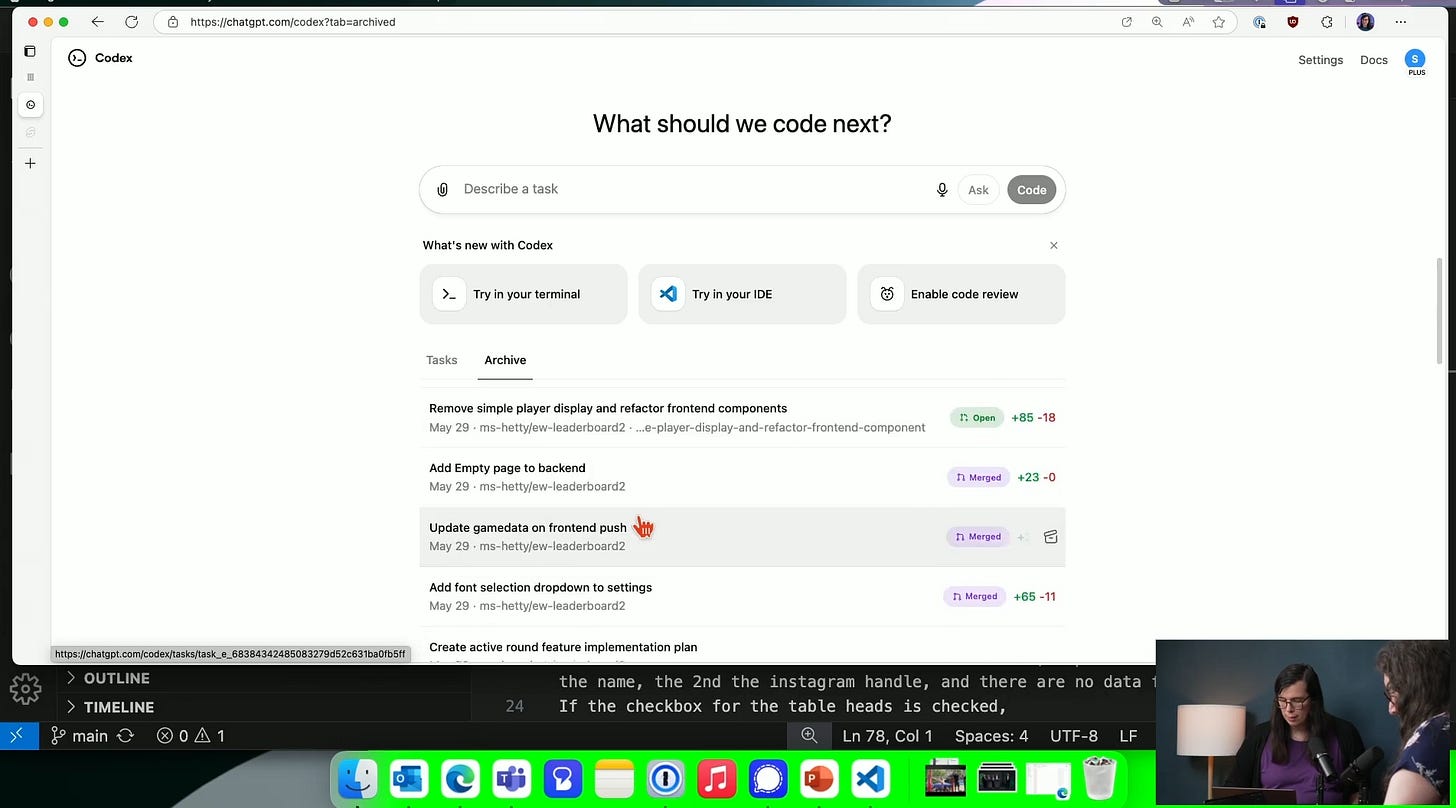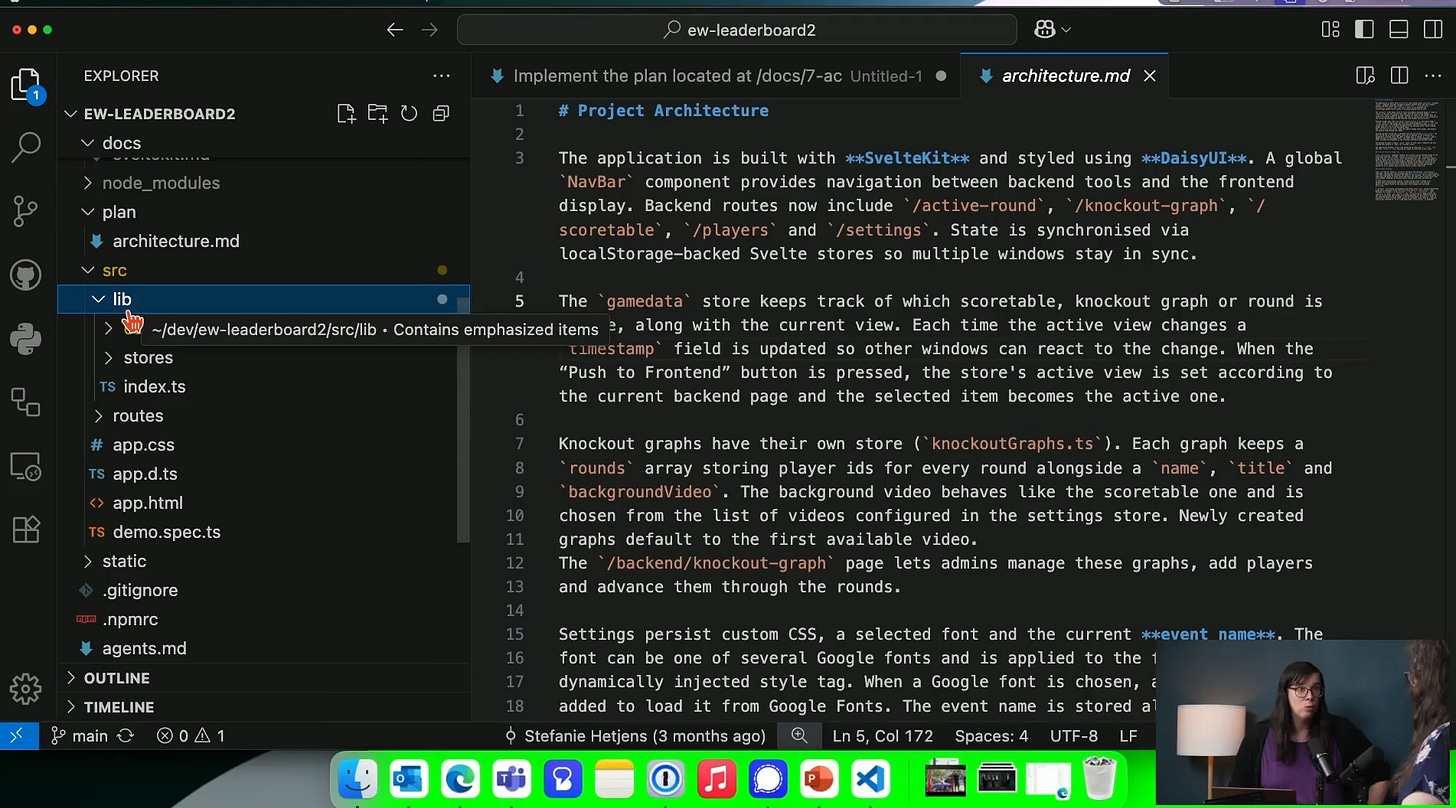Vibe Coding a Broadcasting Graphics Solution in 6 Hours
Lightning Talk with Stefanie Hetjens of EVERYWOW
In a special edition of Elite AI Assisted Coding, Eleanor visited the studios of EVERYWOW in Zürich, Switzerland to learn how founder and CEO Stefanie Hetjens built custom broadcasting software for a live sports event using AI-assisted development. The conversation revealed practical insights about rapid tool development, the importance of documentation over code, and what "vibe coding" really means in practice.
The Challenge: A Custom Solution for a Unique Event
EVERYWOW typically produces video content and live streams for corporate clients worldwide. However, in June, they faced an unusual challenge: broadcasting a calisthenics competition from Lausanne as a pay-per-view live stream. With approximately 50 athletes competing in a knockout tournament, the production required a highly specialized graphics solution. Existing tools were either too complex for a small crew or not optimized for the fast-paced demands of a live sports tournament, creating the need for a tailor-made system.
"The usual one is very expensive. There are no cheap solutions. Even open source solutions are really expensive because they are set up for huge setups and need a lot of capacity," Steffi explained. "These workflows are so complicated and so complex to set up. So this is not an option for us."
The team consisted of five people with three cameras, streaming over 5G internet. They needed graphics that could overlay athlete information, scores, and tournament brackets in real-time. While some off-the-shelf tools were available, Steffi found they weren't optimized for the speed required during live sports events.
The Solution: Custom Software in Hours, Not Months
Faced with limited options, Steffi decided to build her own tool. The technical approach was straightforward: a control computer running a web application would output graphics via HDMI, which would be overlaid on the camera feeds using the live switcher's "upstream key" feature — essentially layering graphics over video like Photoshop layers.
The software needed to be "stupidly simple" because, as Steffi noted:
"Time is not there, like, you need to be fast you need something that is developed for being fast on site without a lot of thinking."
The resulting application featured a clean interface with functions like Active Round, Knockout Graph, and score tables. It used a green screen background that the live switcher would remove, making the graphics appear seamlessly over the video feed. All data was stored locally in the browser's local storage, eliminating the need for complex server infrastructure.
The Development Process: AI as Primary Developer
What made this project remarkable was how it was built. After failing with a traditional approach using GitHub Copilot for code completion, Steffi turned to ChatGPT's Codex web-hosted asynchronous coding solution. She discovered what the industry now calls "agentic development" — giving AI comprehensive instructions and letting it build autonomously.
"I went to ChatGPT, I shot the 200 bucks subscription and I used the Codex web interface... I thought like this is the normal thing to do and thanks to you I know that this is now the big trend and I feel like I was super ahead."
The development process revolved around creating detailed implementation plans. For each feature, Steffi would have a conversation with the AI to create documentation first, then instruct it to build based on that specification. These implementation plans, along with an architecture file describing the data model, became the foundation of the project.
Defining "Vibe Coding"
The conversation revealed interesting perspectives on what "vibe coding" actually means. For Steffi, it meant any development where AI writes the code based on instructions:
"As soon as I only give it instructions, even very structured ones, I would call this vibe coding."
Eleanor offered a contrasting view, associating vibe coding more with rapid, intuitive development. Despite the semantic differences, both agreed on the core principle: developers are increasingly becoming specification writers rather than code writers.
The Power of Disposable Software
One of the most provocative insights was the concept of building software for single use. Traditional SaaS products need broad appeal and extensive features to justify subscriptions. But AI-assisted development enables creating highly specialized tools for specific events or purposes.
"How often did you already use a SaaS software which you actually only bought for one specific use case and then you forgot to cancel the subscription? This is a great possibility with vibe coding that you can just do something what you need now... and then you throw it away."
When asked about the project's future, Steffi indicated they might reuse it for similar events but would likely rebuild from scratch as AI tools improve. The software was intentionally designed for this specific calisthenics event, not as a general-purpose solution.
Key Lessons for AI-Assisted Development
For Experienced Developers
Documentation has become paramount in AI-assisted development. Steffi, despite her software engineering background, had never prioritized documentation before. Now she sees it differently:
"AI understands what the code does, but it maybe doesn't understand why the code does, because the real world requirements were not documented... Maybe I would even go so far that software engineering is in future writing the documentation, maybe AI assisted, and the code is not the relevant piece anymore."
She views this as the next abstraction layer in programming history — from assembly to C, from C to higher-level languages, and now from code to natural language specifications.
For Non-Developers
The advice for newcomers was practical: learn enough basics to understand data models and simple database operations. The ability to verify that AI is creating appropriate data structures is crucial, as Steffi emphasized:
"Get your data model right, think about how you want your database. You can do this with ChatGPT, but it helps if you know some basics how to do this."
Understanding concepts doesn't require mastering syntax. As Eleanor noted, she now codes in languages she doesn't fully know, focusing instead on understanding what's happening and writing clear specifications.
Ensuring Reliability
For mission-critical applications like live broadcasting, Steffi's approach focused on recoverability rather than perfection:
"It's not always about that things don't fail... we don't need 100% availability of something. The question is how fast can we recover."
She specifically tested that the application could quickly restart and restore its state from local storage. Despite her software engineering background, she deliberately skipped unit testing, choosing instead to understand the code well enough to predict its behavior.
Looking Forward
The conversation highlighted a fundamental shift in software development. As Steffi suggested, we may be witnessing the emergence of language and documents as the next programming paradigm. The ability to quickly create specialized tools for specific needs, rather than settling for generic solutions, could reshape how we think about software creation and consumption.
The calisthenics broadcast succeeded not despite being built with "vibe coded" software, but because of it — demonstrating that with the right approach, AI-assisted development can deliver production-ready solutions in hours rather than months.


